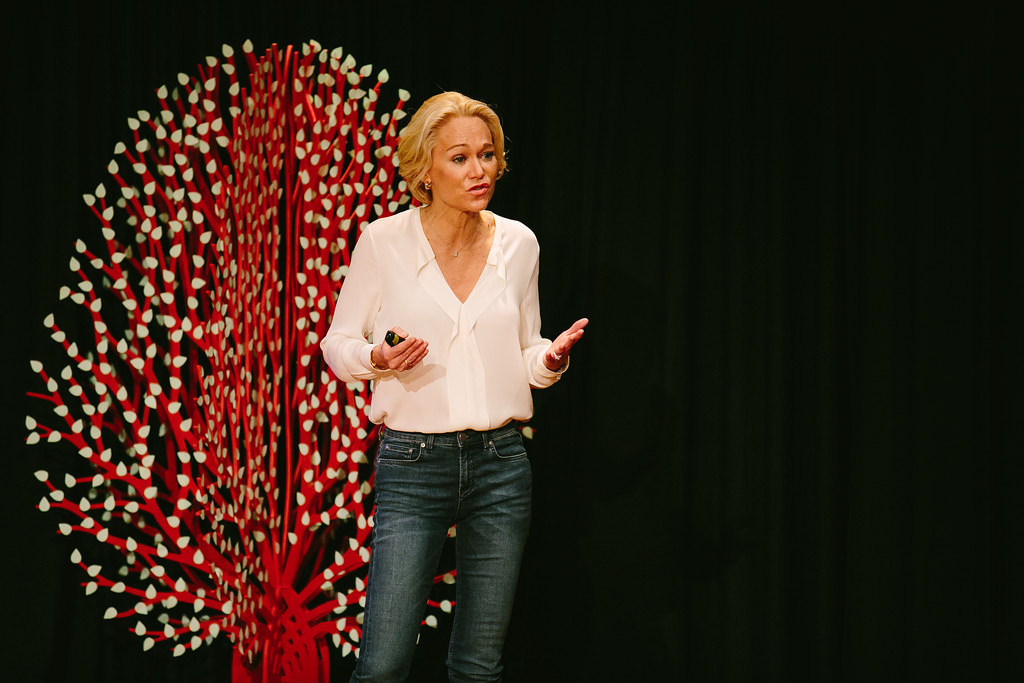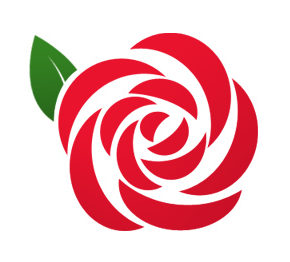
I just delivered a TEDx talk in Lugano, Switzerland, and I loved it!
First, to introduce the conference and the setting:
“TEDx is an international community that organizes TED-style events anywhere and everywhere — celebrating locally-driven ideas and elevating them to a global stage. TEDxevents are produced independently of TED conferences, each event curates speakers on their own, but based on TED’s format and rules.”
Lugano is a beautiful place, almost impossible to describe in its perfection. It is situated close to the Swiss Alps on a lake. The small town has a Main Street with pretty restaurants and shops. I stayed at the hotel Splendide Royal, which sits on Lake Lugano, and from my window I could see the lake. The city has an impressive art museum and a gallery next to the hotel featuring amazing European art such as Kandinsky, Klee, and Marc. The fashion in the city meets the highest standards with everything from Dior to Massimo Dutti.
The Ted X talk was held at the Franklin University on the hill overseeing the town and the area. It is the so called American college of the area, with many foreign students, some there for a semester such as the ambitious young woman, Sheila, who assisted Sergali with the work during the TEDx, and others there for their entire degree.
To understand my feelings one has to understand the entire process of this adventure and the opportunity I had to express in that talk, what Lyfebulb and I personally want to accomplish with respect to patient empowerment.
It all started last year with our board member and Lyfebulb’s co-founder Riccardo Braglia asking whether I would consider throwing my hat in the race for TEDx Lugano 2016. Riccardo had himself given a talk in 2014, and he was able to express many of the reasons why he has taken his company, Helsinn, into the field of oncology supportive care.
I therefore accepted the challenge and discussed what I should speak about with my partner, Anna Hehenberger, scheduled a call with the curator, Sergali Abdelikov, and off we went. The call went well, during which Sergali explained the process for applying, the theme of the conference (Future Wealth) and I spoke about my personal commitment to diabetes, my history and what we are trying to do with Lyfebulb. The talk must be totally non commercial, without references to any company, include a big idea, and offer a proposed solution.
The next step was for me to articulate my idea in an executive summary and send off to Sergali, followed by yet another call. I then moved to the PowerPoint stage followed by a word by word description of what I wanted to say… All this took place over 3 months and finally Sergali was pleased enough to say- “we may accept you but you have to modify your presentation into something less corporate, more visionary and with fewer slides!” He needed to get the presentation approved by a local committee and then by a NYC committee that oversees all TEDx conferences and presentations. TEDx is an independently organized conference series all over the world, with the same vision as the big TED conference.
I loved the direction he had asked me to take the presentation in and immediately started drawing my slides by hand instead of trying to create my own computer generated slides – this was the way I had learned to build presentations back at McKinsey when I first had left academia and moved into the business of healthcare.
My hand drawn slides were clean and I felt that I identified a huge problem, told the story about the idea, and proposed a solution that we as an organization are moving toward!
Now the only problem was converting the slides into real pictures – and I knew a great person who could do this – our wonderful consultant for anything aesthetic, Caroline Dahlmanns. Caroline was up for the task and after 3 revisions I was pleased with the outcome and sent the presentation to the group in Lugano….
They loved it! Completely different look and actually a much stronger presentation – much more like “TED”.
After checking with my team and getting some advice from our board and marketing – I finalized the talk and started practicing how to deliver it. Over the weeks prior to the speech, I gave the talk once a day. In my head, out loud or sometimes even while sitting in a restaurant when I was not part of the conversation. I became obsessed with finding the right words and phrases to capture the audience, delivering my message, and keeping it within the 15 min allocated.
The week of the speech I was in Europe meeting with a big diabetes company together with Anna and we gave a presentation with our vision and goals for addressing the needs of the global diabetes epidemic where I found myself giving the TEDx talk as an intro over lunch! People loved it and got our message, so I felt confident that if I could only tighten this up and present as well a few days later in front of a layman group of people, very critical but also very focused on innovation, I would do well.
The day of the presentation I woke up early, had my usual breakfast of tea with milk, yogurt with nuts and cereal, as well as a piece of toast. I was dressed in what I thought was reflective of the message, blue jeans, designer heels, and a beautiful white silk shirt, and off I went to the salon for a blow out. I didn’t want to be distracted by feeling that my hair was not perfect so I had booked an appointment with a local hairdresser close to the hotel. My presentation was the second in the show, which started at 1:30 pm so I decided to have a light lunch around noon, a vegetable soup….
Finally I was on stage and my adrenaline was high, I was ready for my “fight”. As I used to be a competitive athlete, I saw this as no different than walking onto the tennis court and I had prepared similarly. No one to blame for failure but myself and that is actually how I love scenarios to be – it is up to me to be prepared and it is up to me to deliver. The speech was obviously a team effort, with so much input from my loved ones and the people whom I respect, but on stage I was alone.
“Today I am going to tell you a story about how patients can transform the global diabetes pandemic”
Off I went and I delivered the points loud and clear, and I walked off that stage feeling like a million bucks! “More more”- I really enjoyed the final step of this venture and being on stage in front of a captive audience, and knowing that this speech will be released on YouTube within a few weeks was exhilarating.
So what did I say? Well I guess we will have to wait for the movie but:
1) we are facing a huge problem in the global diabetes pandemic
2) I personally have experienced how diabetes can kill and cripple
3) I have been given a second chance and I will not waste a day not trying to make the most out of that treasured life
4) patients like me and the people who care about us, must stand up and get involved and take responsibility for our lives and for educating the rest of the world about what it is like to live with diabetes
5) teaching, mentoring, innovating, entrepreneurship, advocacy, regulatory, payers, all these areas need patient engagement and leadership
6) do not be a victim, do not wait for solutions, but become a resource, innovate for personal and financial gains
7) my call for action is to GET INVOLVED
You will hear much more from Lyfebulb going forward, our community is growing, the companies we work with are being more and more aggressive in getting the right products to the market, and we as a team will be offering new ways of getting engaged.
Stay tuned!

Dear Lyfebulb Community,
We want to spread the word about a very special Valentine’s Day campaign called Spare a Rose, Save a Child. The campaign is running from now until February 14th, with the aim of raising money and awareness for the International Diabetes Federation’s Life for a Child Program. This Valentine’s Day, you can opt to buy one less rose and donate its value (about $5) to Life for a Child. Each donation helps a child with diabetes in developing countries receive access to lifesaving insulin, glucose monitoring equipment, and medical care.
P4DC (Partnering for Diabetes Change Coalition) started the Spare a Rose campaign in 2013. Since then, the effort has raised nearly $56,000, helping provide life-saving supplies to more than 1,000 children worldwide. I urge you to take this opportunity to reach out and help the global diabetes community. If you are interested in donating, please click here.
Of course, giving is completely voluntary, and simply raising awareness about this great cause will contribute to the initiative. Please help spread the word by sharing this opportunity on Twitter, Facebook, and other social media (#SpareARose). You can also share the marketing materials or even hold your very own mini-campaign in your office by requesting a toolkit. If you do the latter, Close Concerns will enter your name in a drawing to win a free hour of intensive research on any diabetes topic – just let them know you’re holding an office campaign. The drawing will be the day after Valentine’s Day.
Together, we can help change the world, one rose at a time!
Sincerely,
The Lyfebulb Team